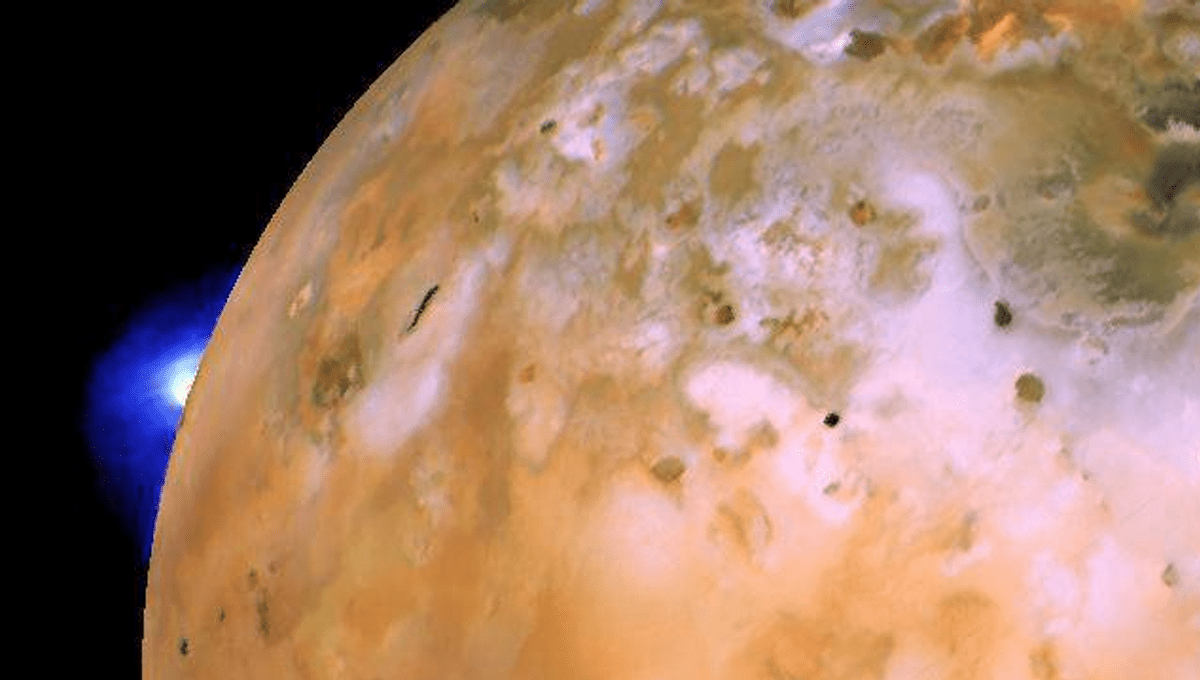
Despite the presence of a spacecraft on the spot, some investigations of Jupiter’s moons are still best done from Earth. The Atacama Large Millimeter/submillimeter Array (ALMA) has been used to study the NaCl (table salt) and KCl gases in the atmosphere of Io, the innermost of Jupiter’s four big moons. The temperature of the gases, and the ratios between them, imply they were released from magma chambers that reach temperatures around 1,300 Kelvin (1,000°C or 1,800°F).
Io is in a rough part of the solar neighborhood. It not only orbits close to Jupiter where the gravitational well is steep, but is in orbital resonance with moons Europa and Ganymede; circling Jupiter four times in the time they take to make two and one orbits, respectively. The tidal forces created by this gravitational dance keep Europa warm enough inside to have an internal ocean but in Io’s case, they’re so much stronger that the moon consists of a ball of hot magma.
The result is what a preprint paper on ArXiv.org calls “The most volcanically active body in our Solar System,” with 400 known volcanoes releasing streams of sulfur dioxide and a mix of trace gases. The authors noted magma chamber temperatures influence the proportions of gasses released.
Neither sodium chloride nor potassium chloride stay in Io’s atmosphere for more than a few hours. By comparing the abundance of the two gasses, the authors estimated the temperature of eight eruptions between 2012 and 2018.
Direct measurements of atmospheric temperatures place them between 500 and 1,000 K, but the magma chambers should certainly be hotter.
The authors found a higher ratio of potassium to sodium in the volcanic plumes than is found in meteorites, suggesting the volcanoes were preferentially releasing KCl. This is consistent with temperatures between the condensing point of the two gasses: 1,173 and 1,373 K respectively. Variations in the ratios observed indicate Io’s magma chambers have differing temperatures within this temperature range.
Professor Jani Radebaugh of Bringham Young University has previously called Io “A laboratory for an early Earth…right around when life was getting started,” when explaining why she studies it and Saturn’s moon Titan. She told New Scientist, “This study confirms that the lavas erupting on Io are likely mostly basaltic in composition, based on their temperature.”
That means they are likely to have a lot in common with sea floors on the Earth as well as the Moon’s so-called “seas” and rocks on Venus and Mars.
In the process, the authors discovered some other aspects of the volcanic moon. Io’s sulfur dioxide (SO2) atmosphere requires sunlight to maintain it. When it enters Jupiter’s shadow this part of the atmosphere collapses, only to recover when Io moves back into the light again. However, the ALMA data indicates NaCl or KCl abundance is unchanged, suggesting not only the sunlight had no direct effect on these gasses, but there also wasn’t an indirect one through sulfur concentrations.
ALMA’s spatial resolution is so good the team could actually map the gasses to specific parts of Io. Peak SO2 densities were not always in the same places as NaCl and KCl, suggesting that while both are of volcanic origin, it is not always the same volcanoes releasing them.
The paper is available on ArXiv.org.
[H/T New Scientist]
Source Link: Jupiter’s Moon Io Has Molten Rock That Tops Temperatures Of 1,000 °C